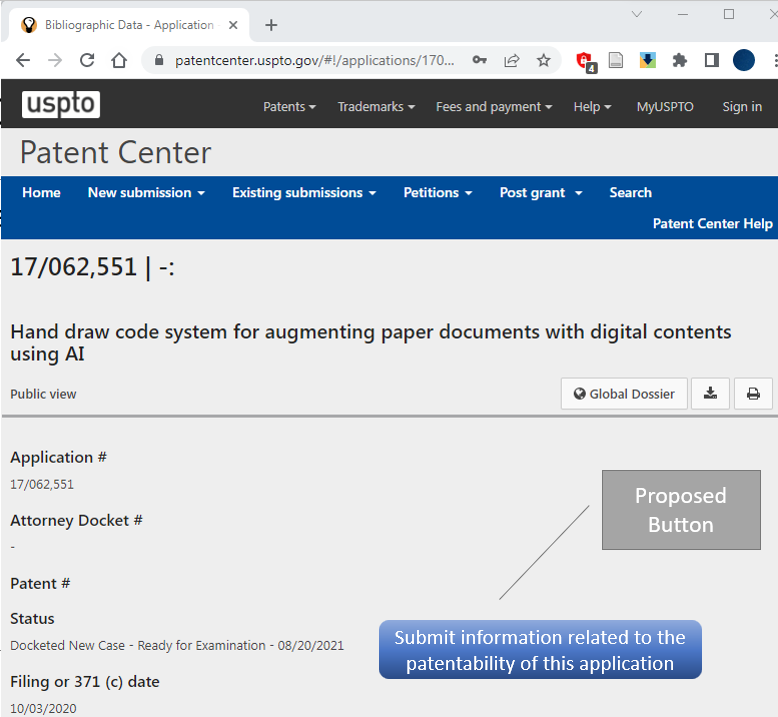by Dennis Crouch
If you have never tried a third-party pre-issuance submission with the USPTO or UKIPO Observation. Give it a whirl.
[https://efs.uspto.gov/EFSWebUIUnregistered/EFSWebUnregistered]
The UK Intellectual Property Office recently announced its plans to provide the public with a bit more access to the patent examination system—making it easier for third parties to provide pre-grant observations that can be used by examiners and seen by others.[1] UK law already allows any person to offer observations “on the question whether the invention is a patentable invention” that must be considered during examination.[2] The UK law requires that any observations be in-writing and also provide reasoning. In the recent accessibility pilot project, over half of submitted observations were identified as useful by the examiner. The UK accessibility proposal is simple—the UKIPO will add an “OBSERVATIONS” button to its new Ipsum service that already provides docketing information.
The USPTO has an online submission form in-place that is a bit clunky, but remains somewhat user friendly. The largest problems with the system: (1) it requires someone to find the "Confirmation Number" from either PAIR or the Patent Center in order to provide a submission; (2) it is limited only to the submission of printed publication material under 35 U.S.C. 122(e); and (3) has a fairly tight timeline -- i.e., after publication but before to the first OA rejection. The result here is that the submissions will be easy for patent professionals, but tricky for the laity.
The system might be improved by adding a button directly to the Patent Center search results; easing the timing; and allowing for observations unrelated to printed publications. A simplistic mock-up is offered below:
I looked for third-party submissions within the dockets of a set of recently issued patents. I found submissions in about 0.14% of cases (14 out of every 10,000). The number should be larger. Dennis Crouch, USPTO Third Party Submissions, Patently-O (Feb. 2, 2022).
To continue reading, become a Patently-O member. Already a member? Simply log in to access the full post.

